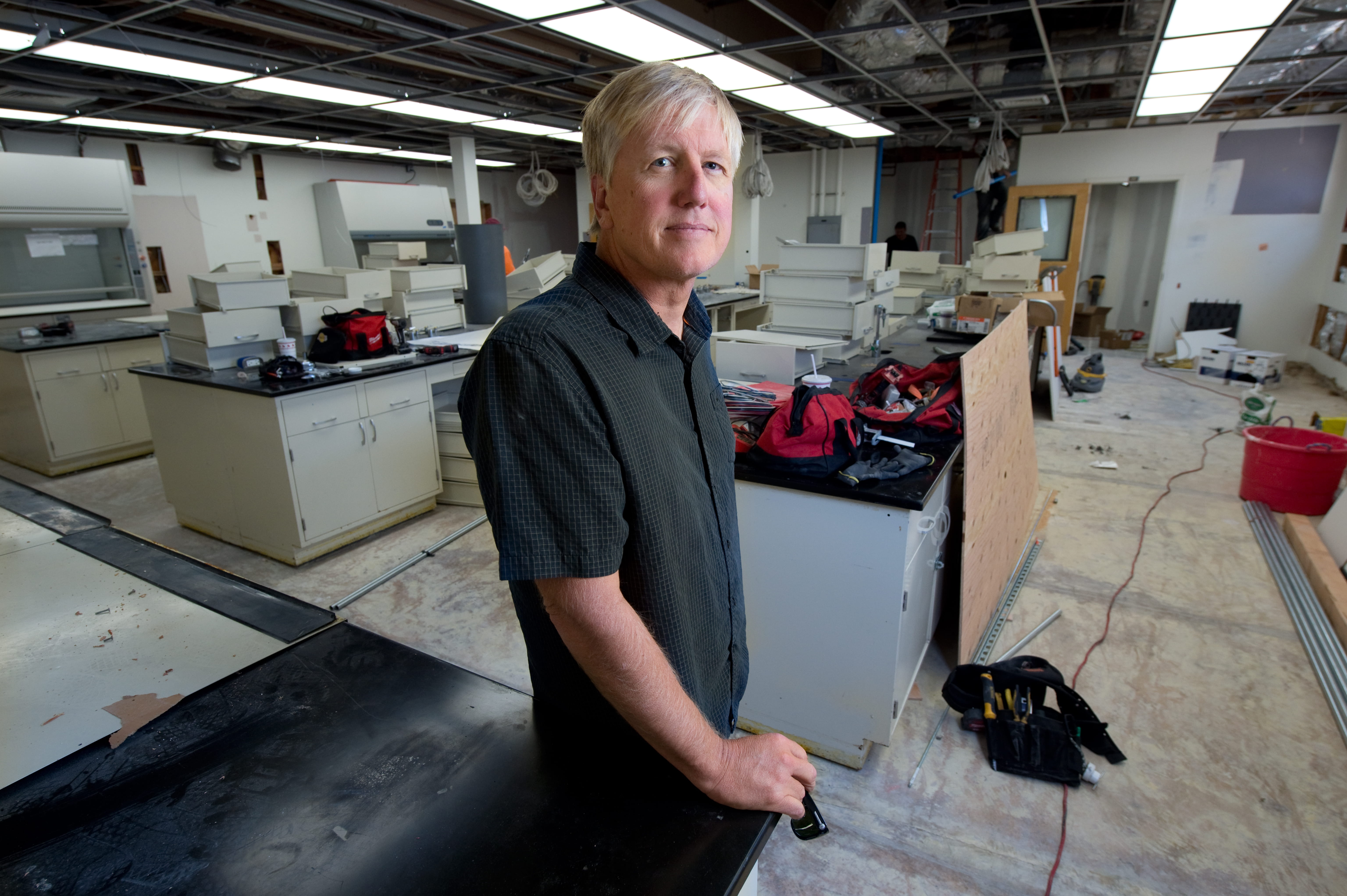Spit personality
UCI researcher finds health and behavior secrets inside human and animal mouths

In the name of spit science, Douglas Granger and his colleagues have collected saliva samples from a restless polar bear, a college marching band and Navy medics dodging bullets in simulated combat.
The mouthwatering liquid is a gold mine of information, says Granger, an “oral fluid” expert who recently moved his renowned research institute to the University of California, Irvine as part of the school’s High Impact Hiring Plan.
A fraction of a drop of spit can be used to measure stress, decipher relationship dynamics, predict heart trouble and even help football players train more effectively, he says: “Laced with hormones, enzymes, DNA and other substances, it can reveal almost everything found in a blood test, but without the needles.”
That makes saliva a boon to researchers across multiple fields, from economics to zoology. A few examples:
- In rural Nepal, Granger’s collaborators are analyzing infant drool to figure out why massaging newborns with sunflower oil reduces mortality by 25 percent compared to mustard oil, the balm traditionally used by mothers to ward off disease.
- Slobber samples from thunder-phobic dogs showed a 200 percent jump in cortisol – a stress hormone – after the canines heard prerecorded storm sounds. Being comforted by their owners did nothing to reduce the anxiety indicator, Granger says, but being around other dogs helped.
- On the heels of studies that found synchronized hormone levels among newlyweds and families, Granger and his team looked for similar patterns in a college marching band. They discovered that musicians with elevated cortisol had more turnover in friendships, while members with high testosterone enjoyed greater relationship stability.
Most oral fluid research gauges stress-related chemicals. (Recent Granger lab subjects include a 500-pound sea lion, military personnel, Mexican immigrants, a Chicago zoo polar bear, children exposed to drugs in the womb and an Asian tribe displaced by a nature preserve.) But other components are gaining attention. For instance, Granger says, lives could be saved by replacing blood tests for heart disease with a home saliva kit that measures C-reactive protein, which is linked to cardiac risks.
Spit also offers a convenient way to collect DNA, check for drug or alcohol use, identify various ailments and improve athletic performance, he notes.
Several years ago, the University of Nebraska-Lincoln hired Granger to help design a “salivary bioscience laboratory” inside the school’s football stadium. There, researchers explore possible concussion biomarkers and chart athletes’ circadian rhythms so they can avoid overtraining.
Saliva’s sports potential, Granger reports, has prompted inquiries from a few NFL, NBA and MLB teams.
Backed by thousands of academic studies, spit has emerged as “the diagnostic fluid of the future,” says Granger, whose efforts helped spawn a worldwide network of salivary science labs. But he cautions that the slimy substance won’t completely replace blood tests, which remain the best barometer for many chemicals that spit specimens miss.
Granger didn’t set out to become a saliva savant. In the early 1990s, as a UCLA postdoc with three UCI degrees under his belt (a bachelor’s in psychology and a master’s and Ph.D. in social ecology), he began researching the biological factors behind behavioral problems in children. But he had trouble recruiting participants because families blanched at the number of blood tests and needles involved.
Looking for an alternative, Granger turned to saliva. It contained the markers he wanted to track, but the collecting and analyzing technology was primitive and unreliable. Seeing an opportunity, he and two colleagues at Pennsylvania State University later started tinkering with specimen gadgetry and then maxed out their credit cards to launch Salimetrics, a company that manufactures saliva testing equipment.
From Penn State, Granger hopscotched to Johns Hopkins and Arizona State University, where he opened pioneering laboratories and held “spit camps” to train researchers from around the globe. But his heart remained in Irvine, where he had grown up after his father, immunologist Gale “Morrie” Granger, joined UCI’s faculty in 1968.
So it didn’t take a lot of arm-twisting when UCI began coaxing Granger and his Institute for Interdisciplinary Salivary Bioscience Research to move west from ASU.
Now ensconced in the School of Social Ecology, Granger will serve as a professor of psychology & social behavior, pediatrics and public health. He’s also hiring several new faculty to join his saliva squad at the IISBR, which is intended to be a collaborative resource for the entire UC system.
Currently, about 135 spit projects are underway in Granger’s lab. One monitors the fertility cycles of San Diego Zoo animals that don’t reproduce well in captivity. Another investigates the connection between low testosterone levels and sleep disruptions in Navy SEALs.
The research possibilities are myriad, Granger says. About the only thing he hasn’t figured out is how to extract saliva from insects.
Spit facts
- The average person secretes enough saliva over a lifetime to fill two swimming pools.
- Saliva’s main ingredients are water and electrolytes.
- It’s a myth that a dog’s mouth is cleaner than a human’s.
- If left out at room temperature, a vial of spit would eventually reek terribly because of all the bacteria it contains.
- Unlike blood, the consistency of saliva varies from person to person. In some cases, it’s as stretchy as cheese on a hot pizza.
- When collecting specimens, UCI spitologists ask subjects to close their eyes, imagine chewing food and move their jaws. The gimmick helps spur saliva production. Samples are then frozen before analysis.